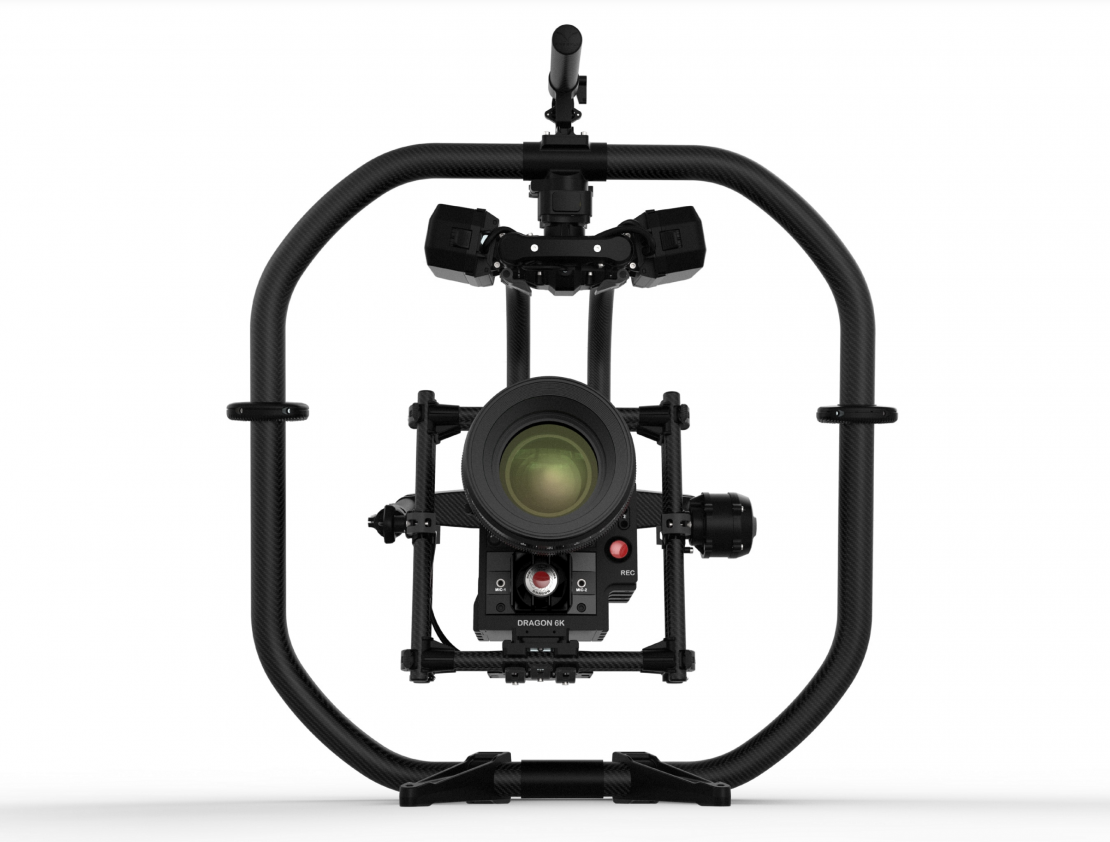MoVi Pro is the Next Evolution in Stabilized Motion
The new MoVi Pro is a more sophisticated, battle-tested design.

When Freefly first released the test film for the MoVi camera stabilizing rig three years ago, it was an exciting moment for indie filmmakers. Shots that previously required expensive equipment were now possible on a reasonable budget. Some shots that were previously impossible were now almost easy.
This looks like a major step forward for stabilizers.
But the system—and its many, many copycats—suffered from problems that often plague first-generation products. It could take a long time to get the calibration properly set up. Restart times on battery swaps were time-sucks on set. Cabling was messy and prone to getting snagged, throwing off your shot, or exposure to the elements. The MoVi was great, but it at times felt more like a beta than a final release.
Today, Freefly has finally released the next generation: the MoVi Pro.
Now, the company that first popularized gimbal stabilization appears to be the company that is going to help it grow up.
Freefly is clearly driven by shooters and has had a close relationship with its customers out in the field; the evolution of the design really shows. For the first time, MoVi looks clean and well-integrated.
MoVi Internal Cable RoutingCredit: Freefly
By switching to internal cable routing, the new MoVi Pro not only looks like a designed device (and not something rigged DIY), but it’s also less likely to snag on nearby objects when executing a complicated move. It’s safer from inclement weather, and it’s going to be faster to set up.
The rig assembly comes with a built-in stand, making it easier for the operator to rest the MoVi.
To that end, the MoVi now offers a two-second boot time, so you won’t miss a shot waiting on the rig to boot. That feature might not matter much, however, since the system offers hot, swappable batteries; in theory, you could keep the stabilizer turned on all day and never need to boot up by swapping batteries live whenever one gets low.
MoVi ProCredit: Freefly
The Pro is also designed to offer camera and accessory power directly, so the only batteries you’ll need to worry about throughout the day are the MoVi Pro batteries.
In addition to power for camera and accessories, MoVi has worked to integrate RED Camera Protocol (RCP) for remote control of RED camera bodies. Even if your MoVi is on a drone in the air or at the end of a 20′ crane, you can change your RED camera settings, including checking playback, from the MoVi remote or the new MIMIC remote.
Credit: MoVi Pro
In order to expedite the rig setup, the Pro offers an auto-tune mode that is able to auto-calibrate as the camera setup changes. Time is money on set; time lost to calibrating a camera after a lens change is time you don’t get to spend shooting.
In a final, much-appreciated addition, the rig assembly comes with a built-in stand, making it easier for the operator to rest the MoVi when it’s not being put to dynamic use.
Built in stand for the  MoVi ProCredit: Freefly
MoVi ProCredit: Freefly
This looks like a major step forward for stabilizers, and one that is well positioned to keep Freefly ahead of the fierce competition in this space.
Packages for handheld or aerial work will come in around $6,500 and are expected to ship in mid-November. For more info or to order, head over to the Freefly site.
Tech specs
25.2V hot swappable MoVi Pro Batteries
Power Outputs: Camera D-Tap, Spine D-Tap, Tilt D-Tap, Tilt USB
Detailed info screen
Auto-tune mode for calibration
Custom designed direct drive brushless motors, twice as much torque as before
180° instant roll to go from hand held to TERO
Toad In The Hole Quick Release
Increased 30mm ring diameter
New MIMIC controller
Pro App
2 second boot time
60dB at 1Hz disturbance rejection
Built-in stand
